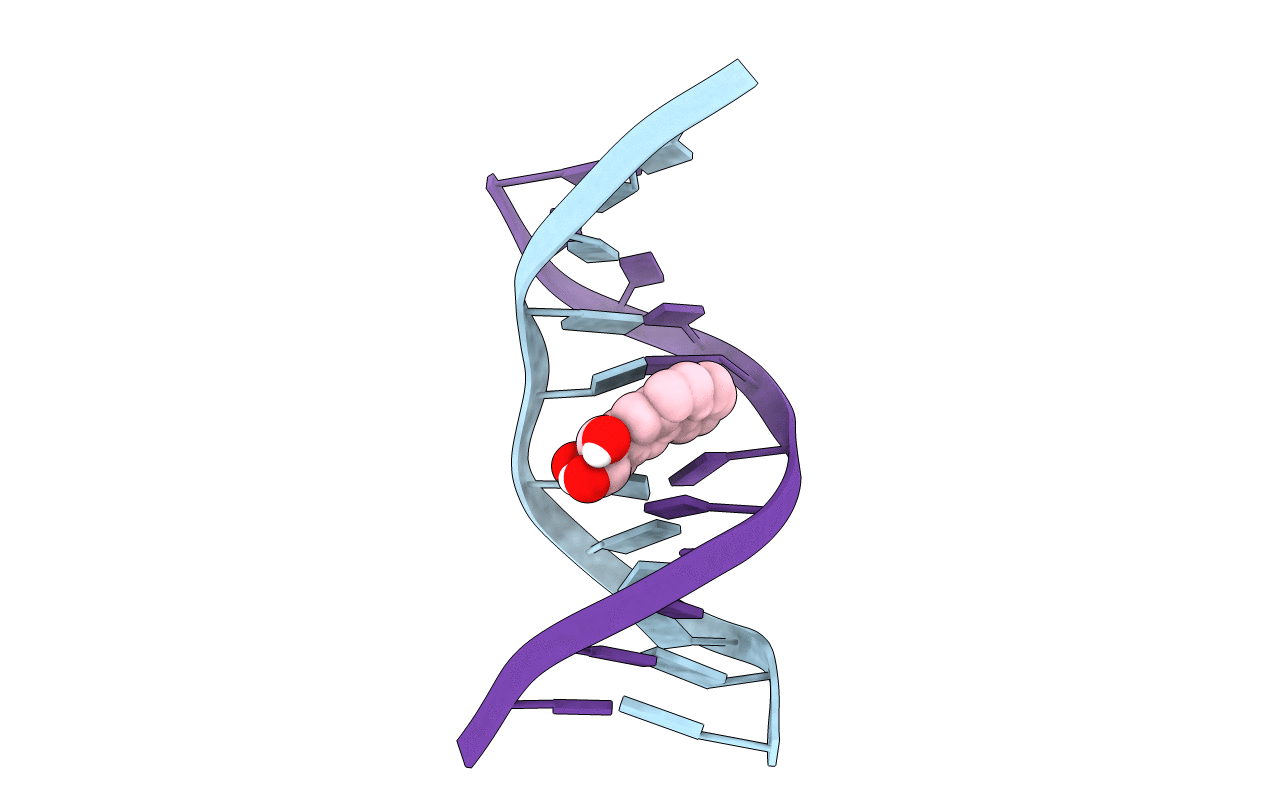Abstact
The structure of the non-bay region (8S,9R,10S,11R)-N(6)-[11-(8,9,10, 11-tetrahydro-8,9,10-trihydroxybenz[a]anthracenyl)]-2'-de oxyadenosyl adduct at X(6) of 5'-d(CGGACXAGAAG)-3'.5'-d(CTTCTTGTCCG)-3', incorporating codons 60, 61 (underlined), and 62 of the human N-ras protooncogene, was determined. Molecular dynamics simulations were restrained by 475 NOEs from (1)H NMR. The benz[a]anthracene moiety intercalated above the 5'-face of the modified base pair and from the major groove. The duplex suffered distortion at and immediately adjacent to the adduct site. This was evidenced by the disruption of the Watson-Crick base pairing for X(6) x T(17) and A(7) x T(16) and the increased rise of 7.7 A between base pairs C(5) x G(18) and X(6) x T(17). Increased disorder was observed as excess line width of proton resonances near the lesion site. Comparison with the bay region benzo[a]pyrene [Zegar, I. S., Kim, S. J., Johansen, T. N., Horton, P. J., Harris, C. M., Harris, T. M., and Stone, M. P. (1996) Biochemistry 35, 6212-6224] and bay region benz[a]anthracene [Li, Z., Mao, H., Kim, H.-Y., Tamura, P. J., Harris, C. M., Harris, T. M., and Stone, M. P. (1999) Biochemistry 38, 2969-2981] adducts with the corresponding stereochemistry and at the same site shows that this non-bay region benz[a]anthracene lesion assumes different base pair geometry, in addition to exhibiting greater disorder. These differences are attributed to the loss of the bay region ring. The results suggest the bay region ring contributes to base stacking interactions at the lesion site. These structural differences between the non-bay and bay region lesions are correlated with site-specific mutagenesis data. The bay region benzo[a]pyrene and bay region benz[a]anthracene adducts were poorly replicated in vivo, and induced A --> G mutations. In contrast, the non-bay region benz[a]anthracene adduct was easily bypassed in vivo and was nonmutagenic.



